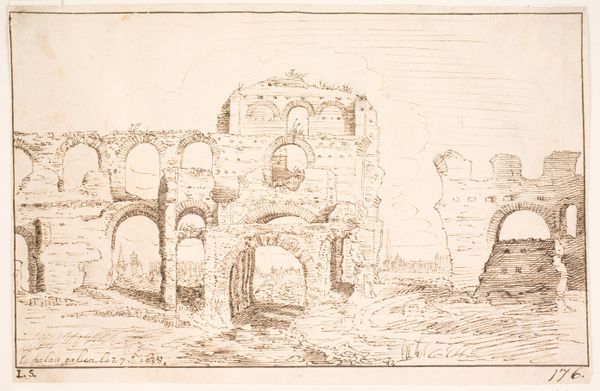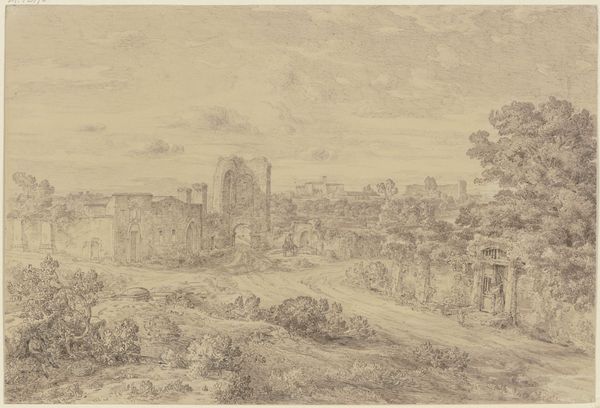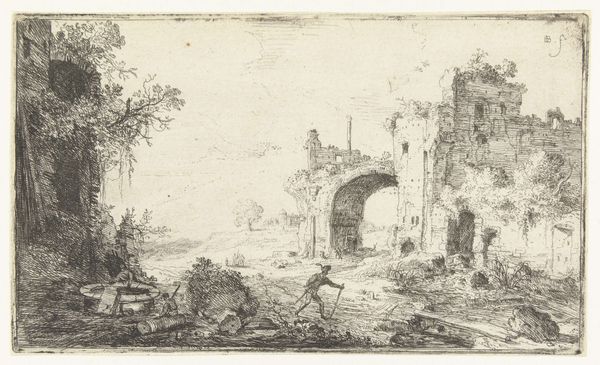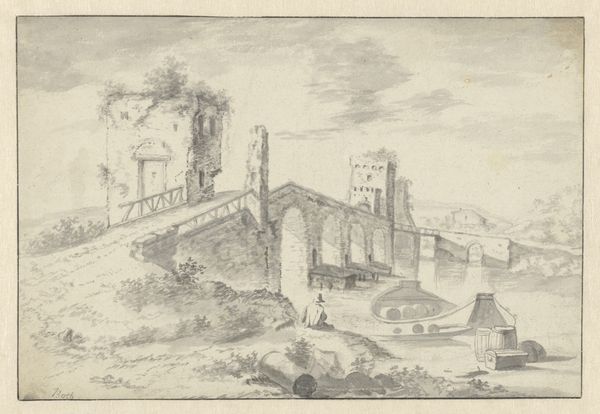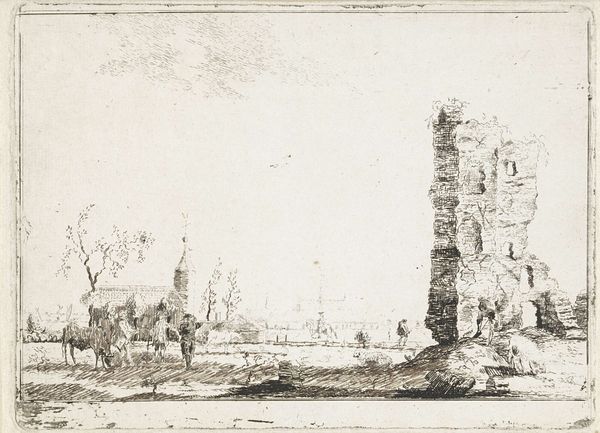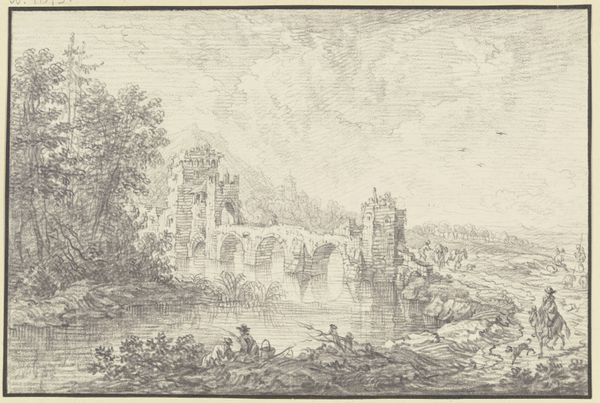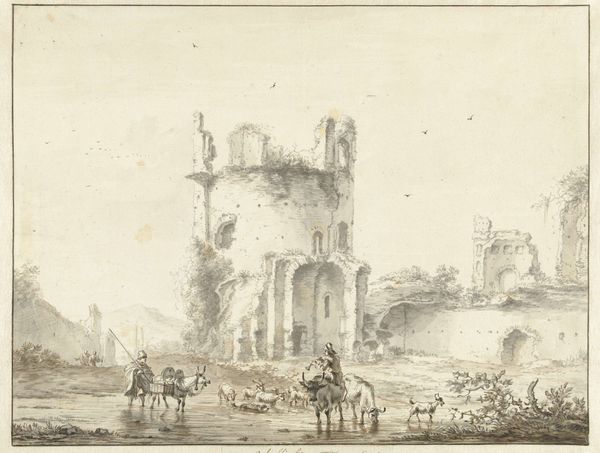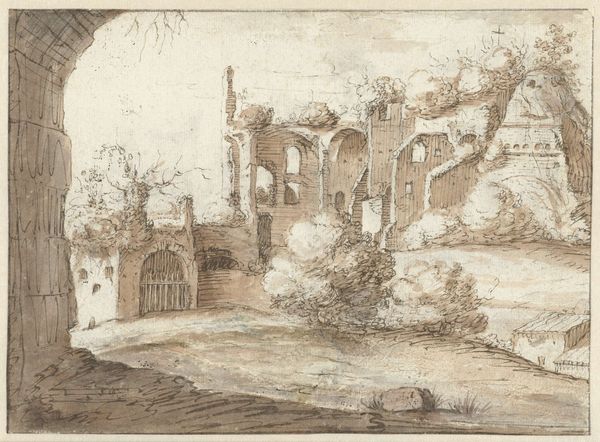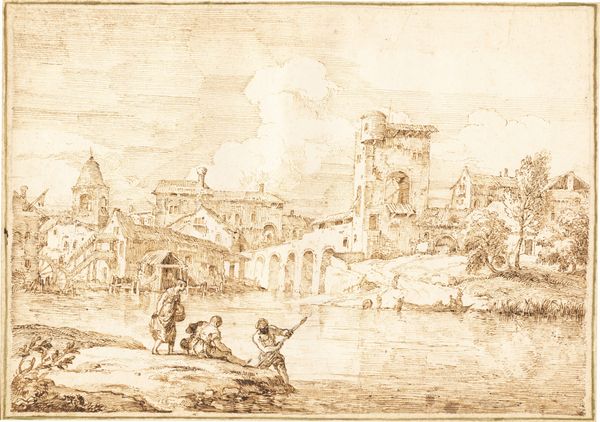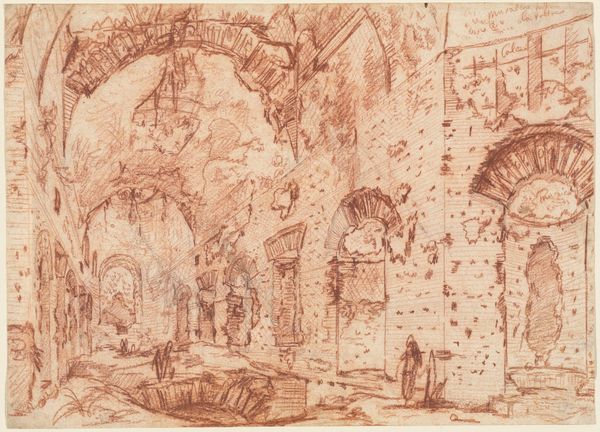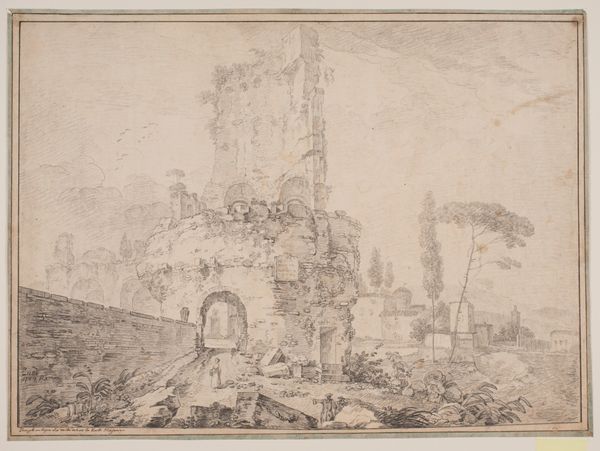
drawing, etching
#
drawing
#
dutch-golden-age
#
etching
#
landscape
Dimensions: 152 mm (height) x 250 mm (width) (bladmaal)
Curator: Jan van Goyen’s etching, “Flood Landscape with a Ruin,” created in 1644, offers us a glimpse into the Dutch Golden Age. Editor: The lightness of the etching technique immediately strikes me. It feels fragile, almost as if the ruin might crumble further at any moment. There's a stark contrast between the impermanence implied and the laborers depicted within the image. Curator: That fragility speaks volumes, I think, about the era's complex relationship with its past. We’re seeing a crumbling structure juxtaposed against everyday labor—a subtle commentary, perhaps, on the cyclical nature of history and society’s continuous attempts at building and rebuilding. How do we memorialize a past amidst the ceaseless process of creation? Editor: It’s all in the lines, isn't it? The quick, almost nervous etching lines give texture to the stone and evoke the dampness of the landscape. Considering his methods of production – how might those repetitive physical movements represent the labors contained within the image, be they implied or documented? Curator: The ruins here are a particularly evocative emblem. In seventeenth-century Dutch art, ruins served as potent symbols, simultaneously embodying both the glories of the past and the transience of earthly power, perhaps mirroring anxieties concerning Dutch identity formation and shifting global power dynamics. Editor: Thinking materially, the accessibility of etching compared to painting must also have played a role. The ability to reproduce and disseminate these images would have shaped how different classes engaged with landscape, labor, and perhaps their ideas about what constitutes ‘Dutch identity’ at that moment. What was being constructed at a popular, consumptive level? Curator: Precisely! It challenges the traditional art historical narrative of landscape painting that often overshadows the important work of these printed images, and speaks directly to issues of class and representation within this period. This piece encourages questions about national identity formation within specific socio-economic structures. Editor: Ultimately, seeing the landscape distilled to its most rudimentary components and then reproduced in this way underscores the materiality of seeing itself. Thanks for exploring this artwork with me today; I think our understanding benefits immensely from an intersectional and material investigation. Curator: Agreed, understanding van Goyen’s “Flood Landscape with a Ruin” as more than just a landscape enables new insights. Thank you.
Comments
No comments
Be the first to comment and join the conversation on the ultimate creative platform.
